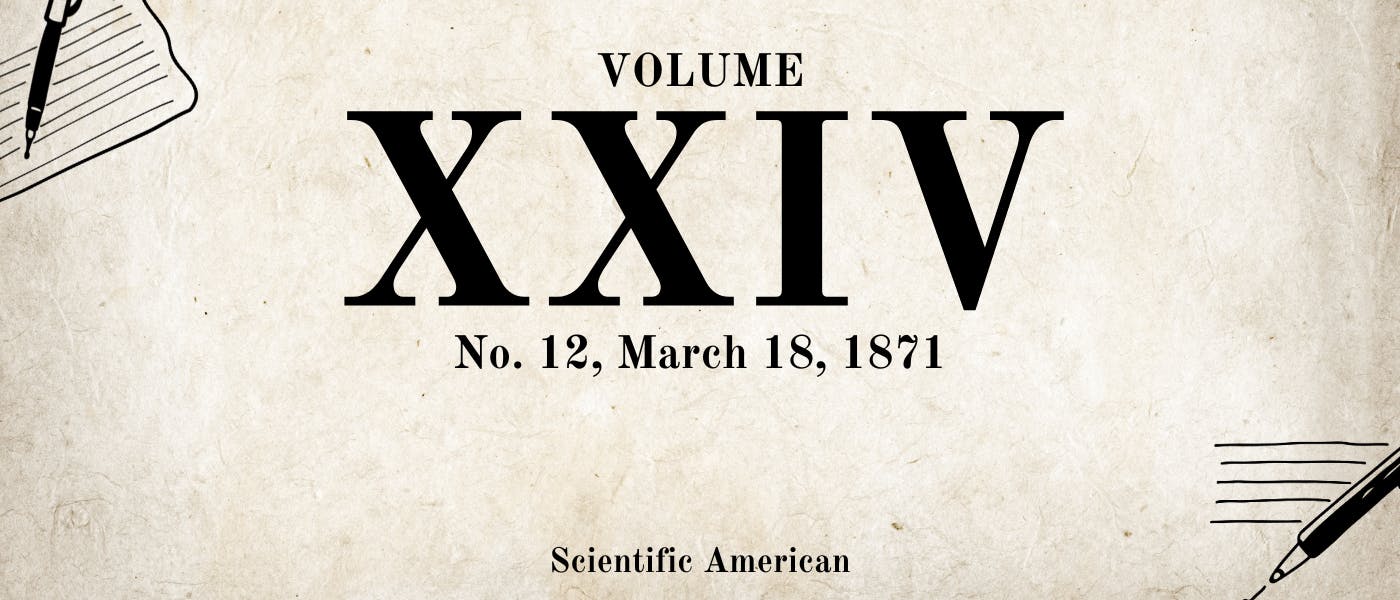Scientific American, Volume XXIV., No. 12, March 18, 1871 by Various, is part of the HackerNoon Books Series. You can jump to any chapter in this book here. SCIENTIFIC INTELLIGENCE.
SCIENTIFIC INTELLIGENCE.
According to Petermann's Mittheilungen, the new German empire, including Alsatia and Lorraine, will embrace 9,901 square miles, with 40,148,209 inhabitants. Russia alone will exceed it in extent and population, for Russia in Europe has 100,285 square miles with a population of 69,379,500. France, after the loss of Alsatia and Lorraine, will have 9,588 square miles of territory, with 36,428,548 inhabitants. Austria will number 35,943,592 inhabitants spread over a larger extent of country, namely, 10,980 square miles. Great Britain and Ireland has 5,732 square miles, with 30,838,210 inhabitants; and Italy, including Rome, has 5,376 square miles, with 26,470,000 inhabitants. In the order of population, the Governments will stand: Russia, Germany, France, Austria, and England; but in military power, the first position must henceforth be accorded to Germany.
AMERICAN INSTITUTE OF MINING ENGINEERS.
A circular has been issued by several mining engineers, proposing a meeting at Wilkes-Barre, some time in April or May next, of all persons interested in the general subjects of mining and metallurgy, for the purpose of establishing an association, to be called "The American Institute of Mining Engineers." The Institute will hold meetings periodically "in the great mining and metallurgical centers, when works of interest, such as mines, machine shops, furnaces, and other metallurgical works, can be inspected, and the members exchange their views, and consult, for mutual advantage, upon the difficulties encountered by each." There will be the usual publication of "Transactions" and "Proceedings."
The idea of forming an association of persons thus mutually interested in each other's occupations, is an excellent one; but it has been suggested by a number of scientific gentlemen that the American Association for the Advancement of Science offers every facility for the accomplishment of the objects set forth in the circular, while it affords the very great advantage of an assemblage of men learned in all departments of knowledge, whose acquaintance mining engineers would do well to make, and from whom they could learn much, while at the same time imparting of their own knowledge.
As a section of the American Association, the mining engineers would have more influence before the country, and it would perhaps be well for them to stop and consider before establishing a separate institute.
CONSUMPTION OF SUGAR, COFFEE, AND TEA.
E. Behm gives in his geographical year book, for 1870, the following estimate of the consumption of sugar, coffee, and tea, per capita, in various countries:
|
COUNTRIES. |
Sugar, lbs. |
Coffee, lbs. |
Tea, lbs. |
|---|---|---|---|
|
Great Britain |
35.96 |
0.90 |
3.190 |
The entire consumption of sugar in Europe has averaged, during the last few years, three thousand four hundred and ten million pounds (3,410,000 pounds), and for the whole world it is set down at nearly twice that amount. It is estimated that three fourths of the sugar is made from cane, and one fourth from the beet.
The consumption of coffee has doubled in most countries during the last twenty years.
About HackerNoon Book Series: We bring you the most important technical, scientific, and insightful public domain books.
This book is part of the public domain. Various (2006). Scientific American, Volume XXIV., No. 12, March 18, 1871. Urbana, Illinois: Project Gutenberg. Retrieved https://www.gutenberg.org/cache/epub/19180/pg19180-images.html
This eBook is for the use of anyone anywhere at no cost and with almost no restrictions whatsoever. You may copy it, give it away or re-use it under the terms of the Project Gutenberg License included with this eBook or online at www.gutenberg.org, located at https://www.gutenberg.org/policy/license.html.

